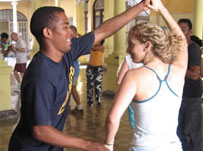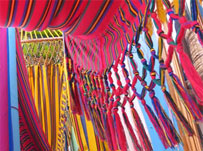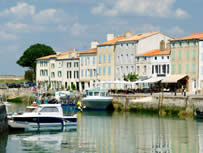Top 5 winter getaways - outside Europe
1. Buenos Aires, Argentina
Buenos Aires is an old favourite at Cactus, and no more so than during the Northern Hemisphere’s winter, when this captivating capital of Argentina basks in a glorious Southern summer. You don’t need a thermometer to read the heat on the dance floor, however. As the world’s capital of tango, Buenos Aires plays host to the Buenos Aires Tango Festival at the end of February and the beginning of March; across the city and in the streets, you’ll be treated to hundreds of tango displays, many of them free, and there’s plenty of opportunity to join in too…
Spanish courses in Buenos Aires
2. Rio de Janeiro, Brasil
If there’s one thing to experience in South America, it’s Carnival in Rio. Taking place in 2011 from Sat March 5th to Tues March 8th, Carnival is an all-singing, all-dancing celebration like none you have seen before. With colourful parades, floats, balls, street carnivals and bands bringing the entire city to life, it’s not surprising that this is known as the greatest show on Earth. And all this under a hot Brazilian sky with golden beaches on the doorstep…this is one late winter escape to get in the diary now!
Portuguese courses in Rio de Janeiro
3. Sainte-Anne, Guadeloupe
Guadeloupe is a little piece of paradise in the French West Indies. It’s the kind of place you’d go for an exotic beach holiday, not a language course…but yes, it’s really true, you could be learning  French in the morning and chilling out on palm-fringed beaches in the afternoon. Add to this a good dose of Caribbean and Creole culture, and winter back home will soon be a distant memory.
French in the morning and chilling out on palm-fringed beaches in the afternoon. Add to this a good dose of Caribbean and Creole culture, and winter back home will soon be a distant memory.
4. Cairo, Egypt
If you want to forget about winter, work and even Christmas, look no further than Egypt. The instant you arrive you will be immersed in the hot and buzzing metropolis of Cairo, the mysterious Pyramids rising on the horizon and the River Nile luring you to its banks. This ‘City of a Thousand Minarets’, as it is known, is a fascinating center of religion, politics and culture, and makes for the perfect place to learn the beautiful, ancient language of Arabic.
5. Québec City, Canada 
If playing in the snow is your thing, then the Quebec Winter Carnival, held from January 28th – February 13th 2011, is the place for you. Coinciding with Mardi Gras celebrations elsewhere in the world, this is the world’s largest winter festival and is an absolute must for those who like the magical side of winter – adults and children alike. Enjoy horse-drawn sleigh rides, skating, dogsled races, magnificent ice sculptures, a children’s village, night parades and more. For a true ‘winter’ escape, it doesn’t get much better than this.
Cactus offers language courses, which can be combined with activities including dance, diving, cooking, wine tasting and sports, in over 30 languages, in 60 countries and 500 destinations worldwide.








